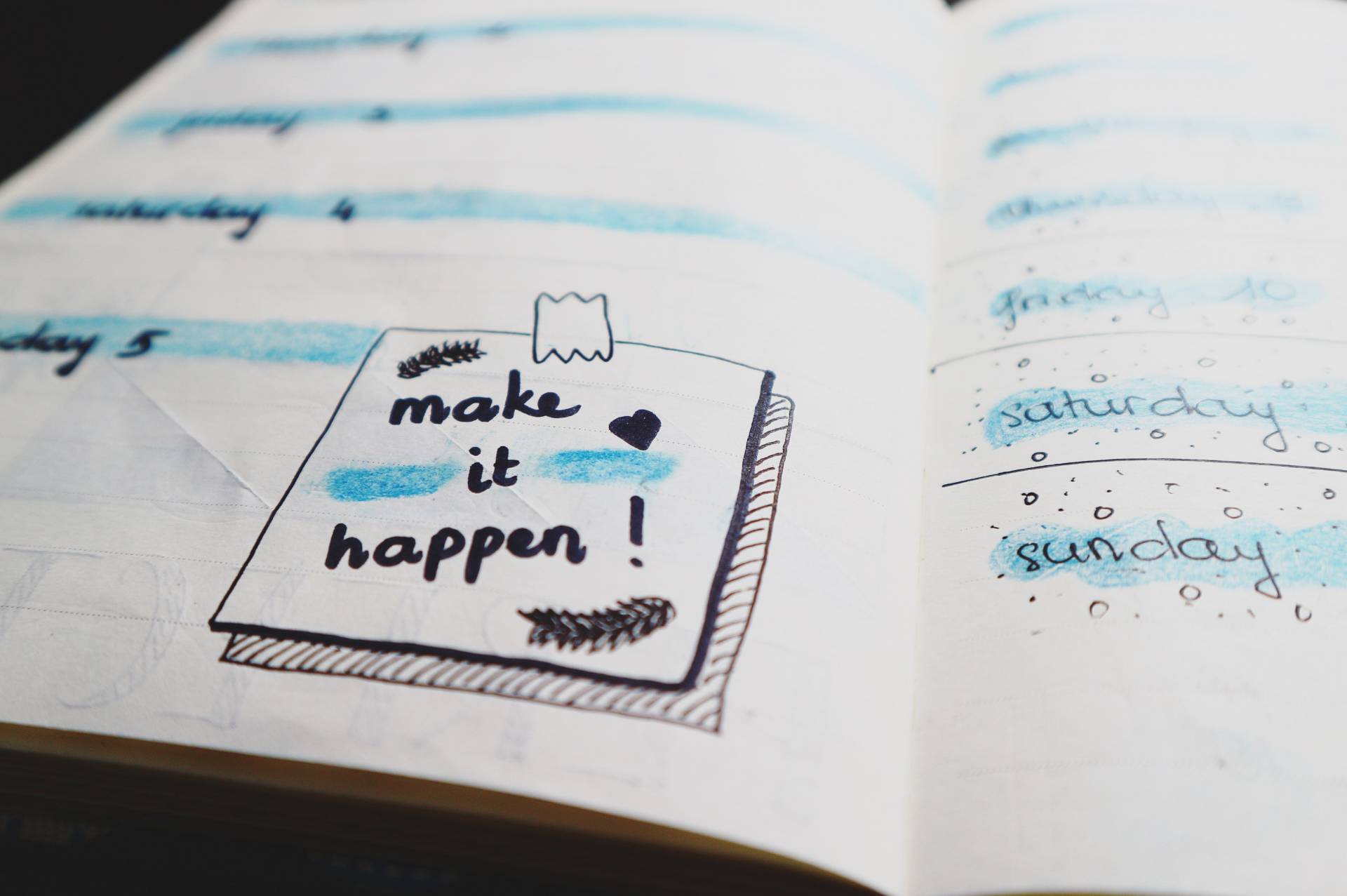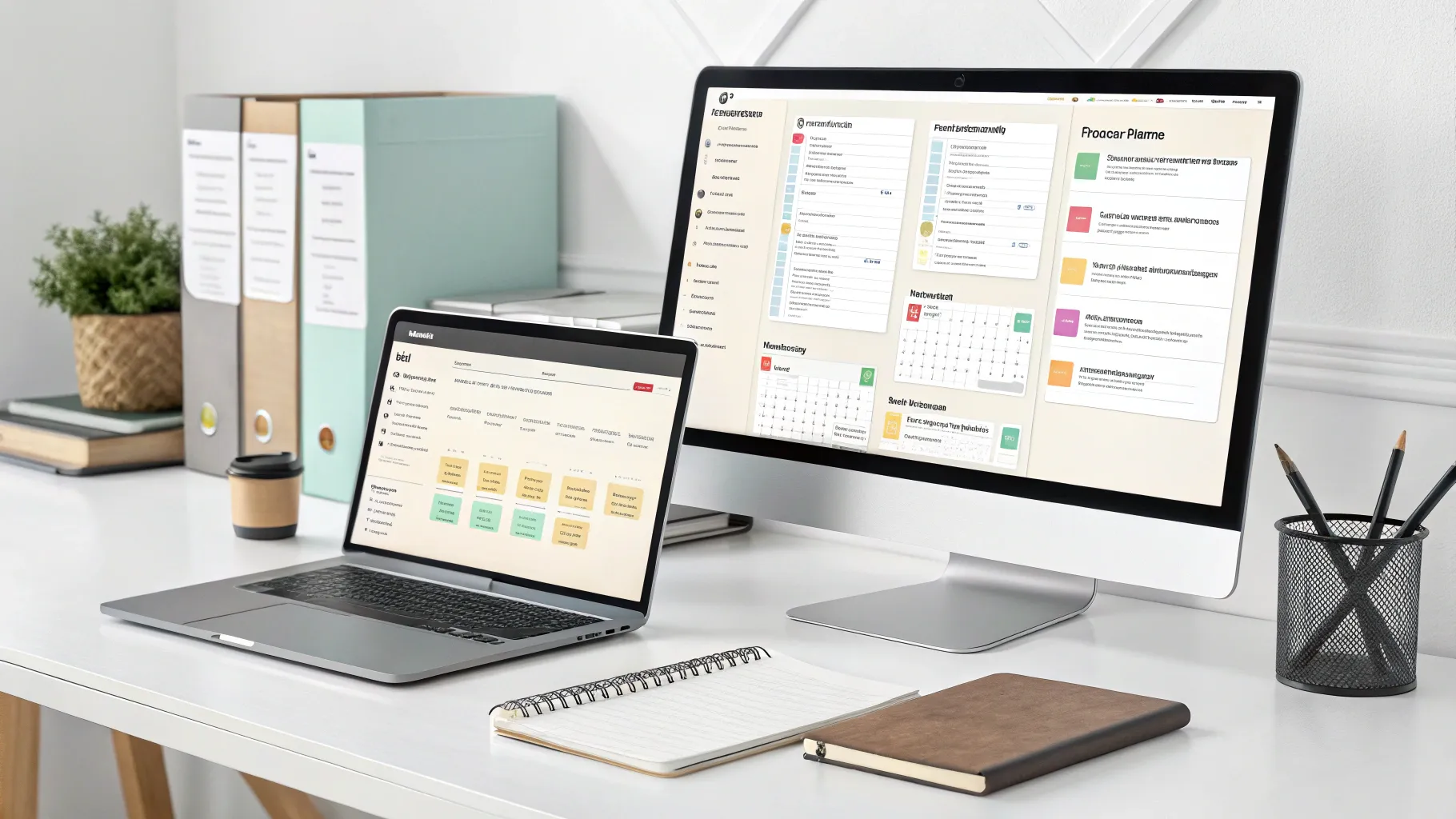

While it’s not quite the end of the year, next year’s calendar begins to fill up. A lot is going on between weddings and other family celebration requests to “save the date,” business trips, project deadlines, and vacations. And, if I’m not careful, this could cause calendar conflicts.
Fortunately, adding these to my calendar now can prevent such issues. But that got me thinking. Maybe I should just map out next year.
To be fair, this isn’t a revolutionary idea. Shark Tank’s Robert Herjavec has been an advocate for this for years. In fact, back in 2017, he told CNBC’s Make It, “I live and die by my calendar.” As such, he always tries to plan at least 12 months ahead.
″[It] allows me to manage my time and prioritize,” he explains. “It doesn’t mean that everything on the calendar needs to be locked in, but it gives me an idea of where I’m going to be and when so I can maximize my time.”
For example, Herjavec told Entrepreneur that he would meet with the school counselors a year in advance to plan his kids’ activities. “Because of that, I never missed a swim meet. I never missed a school play. I never missed anything,” he said.
Herjavec’s calendar also helps him stay organized on a daily basis. “The details, the briefs are always all there,” he says. “It helps me be prepared, and I always have a reference.”
“I once planned my life six months ahead,” a young mom told the Atlanta Journal-Constitution “It created a rhythm to my schedule that led to new friendships and great family dinners. But, when I got out of the habit of planning ahead that year, everything went back to the way it was. I need to discipline myself to think ahead again.”
The Perks of Being a Planner
“Wouldn’t it be nice if you could just wake up and have a productive day without having a plan?” asks Angela Ruth in a previous Calendar article. “It sounds liberating. But that’s just not how it works.”
“I mean, it’s like building a house,” she adds. “You need a plan to determine the necessary materials if the foundation is sound and the steps required to assemble the home properly.”
“Long story short, productivity doesn’t happen. So, you need to make a plan.” But in addition to boosting your productivity, it reduces your risk of dying by 13 percent. And, it can offset the adverse health effects of less education.
Moreover, planning makes us less anxious, stressed, and happier. If you’re still not convinced, planning can also make the following possible;
- Achieve your purpose. According to Steve Maraboli, “If you don’t know exactly where you’re going, how will you know when you get there?”
- Set the right priorities. Planning enables you to identify what’s essential and what you can say “no” to. Then, with clear goals, you will not have any ambiguity as to how to achieve them.
- Breaks down giant goals. You’ll be able to turn large obstacles into smaller, more manageable tasks.
- Provides security. Is there nothing more terrifying than uncertainty? Planning reduces this fear.
- Presents alternatives. Did you ever find yourself at a crossroads? When this type of scenario arises, an alternative plan will help you navigate it more easily.
- Lets you track your progress. Comparing your expectations with your actual performance enables you to gauge your success. In return, this can build confidence and maintain motivation.
- Sets deadlines. As Alan Lakein once said, “planning is bringing the future into the present so that you can do something about it now.”
How to Plan Your Life a Year in Advance
Start with a review.
Let’s just come out of the gates swinging. After all, this is probably the most critical and daunting task. However, reviewing the past year can guide you in knowing what to add to your calendar, as well as what can be left off.
Personally, I would do this during the weekend when you have some downtime. However, since the weather is becoming less than desirable, you’re probably staying inside anyway. So, why not make the most of it?
What exactly should this review entail? Well, that can vary. But, are some suggestions;
- Highlight three significant achievements and three areas for improvement.
- Reflect on you spent your time. What activities aligned with your goals, and what did not?
- Mark your calendar with important dates, meetings, and deadlines that you already know about for next year. You could also look at your past calendar to see if there are recurring entries that should be scheduled, like quarterly meetings or vet appointments.
- Determine what you need to prioritize for your overall health and well-being. Book doctor’s appointments and leave space for hobbies, vacation, or volunteering.
Since you don’t want to overwhelm yourself here, you don’t have to be extremely specific. Even a general idea is sufficient in helping your map out your year in advance. However, I would strongly recommend booking dates that are set in stone right now to avoid overlapping.
Make a plan of attack.
Where do you want to be on December 31 of next year? Of course, this isn’t an actual location, like at Times Square or ringing in the new year with your nearest and dearest. Instead, you should reflect on the goals that you hope to have reached.
Why is this important? Because identifying this allows you to plan the steps you need to take to reach that destination. Examples could be the skills you need to develop or strengthen, key projects, or working with a mentor.
Another benefit of this? It can help you pinpoint potential roadblocks. In turn, you can develop a Plan B or C. For example, if you wanted to take an in-person workshop, you could also locate some virtual options if there’s another COVID spike.
From there, you can set SMART goals. In other words, they need to be specific, measurable, achievable, relevant, and time-bound. Most importantly, know what you’re actually capable of achieving. Remember, you’re not mapping out a five-year plan, just one for the following year.
While this is necessary, in addition to your SMART goals, you may also want to take into account budgets, big dreams, monthly themes, or bucket list items.
Create a don’t do-list.
“Your to-do list can quickly become overloaded, especially if you have a problem saying no or delegating and outsourcing tasks,” writes Blaz Kos for Spica.
Alternatively, you may also fall into this trap if you have poor task management skills and cannot differentiate between urgent/important, low-/high-impact tasks. Consequently, their to-do lists are always full of tasks that they never finish due to distractions and bad habits.
“The general idea of a not-to-do list is not having to struggle with self-discipline,” adds Kos. “It should help you to eliminate low-value tasks and bad habits from your life, so that you don’t have to weigh the pros and cons, be in a dilemma of whether or not you should make an exception, feel guilty for saying no, and so on.”
Some examples would be;
- Tasks you constantly find yourself doing, but that could have been outsourced, delegated, or deleted.
- Activities that drain you emotionally.
- Other people’s priorities.
- Unnecessary meetings.
Implement a routine.
Do you have recurring tasks? Then, you should add them to your calendar on a recurring basis for the entire year. This way, they’ll become a part of your daily routine.
You could also go ahead and make a weekly schedule too. Scheduling as much as possible in advance will prevent you from rushing around trying to get everything done at the last minute. And, it will also assist you in delegating tasks more effectively.
And, don’t forget to schedule significant quarterly events. Precisely schedule time to monitor your progress. Doing this will let you readjust or reassess your plans if needed or set new goals if you’ve already met your quarterly goals.
Arm yourself with the right tools.
It’s only through the use of the right tools that you’re going to stay organized. In my case, I use a blend of tools. For example, I keep post-it notes to remind me of important to-dos, such as returning phone calls. I also use a notebook for brain dump. And, I couldn’t live without Google Calendar.
Another alternative? Apps like Todoist, Wunderlist, or any of these fifteen planning tools. And, you can’t go wrong with an old school paper planner.
Don’t fill in every blank.
Finally, you don’t have to schedule every single minute of time. Not only would that be an utterly tedious undertaking, but that also wouldn’t grant you flexibility. After all, no matter how much you try, life is unpredictable. And, you need to have some wiggle room in your calendar to address these last-minute occurrences.
Besides having blank spaces to handle the unexpected, scheduling your free time can be stressful. And, it pulls you away from enjoying the moment because you’re consumed with sticking to your schedule.
Image credit: Bich Tran; Pexels; Thank you!











John Hall
John Hall is the co-founder of Calendar a scheduling and time management app. He’s also a keynote speaker that you can book at http://www.johnhallspeaking.com.